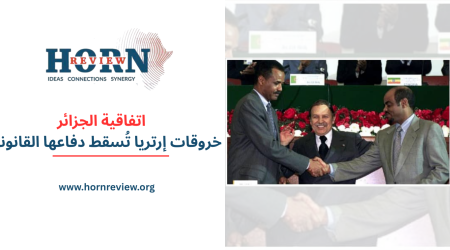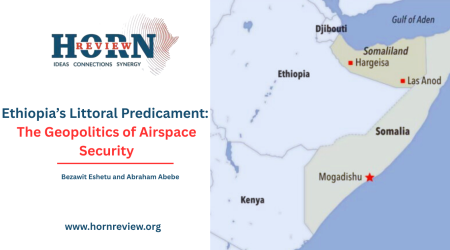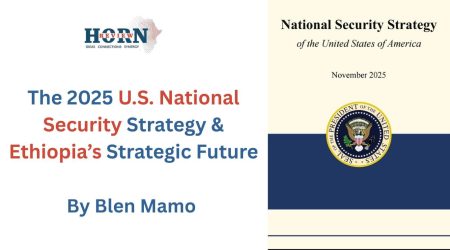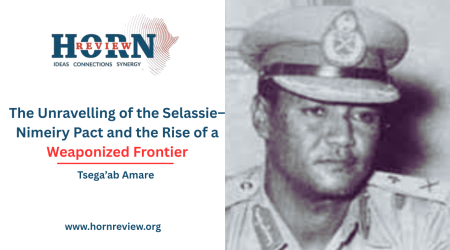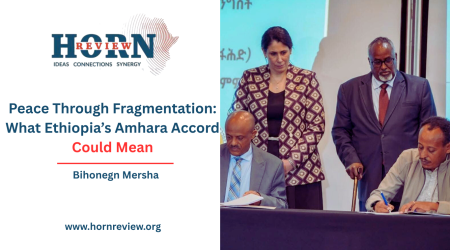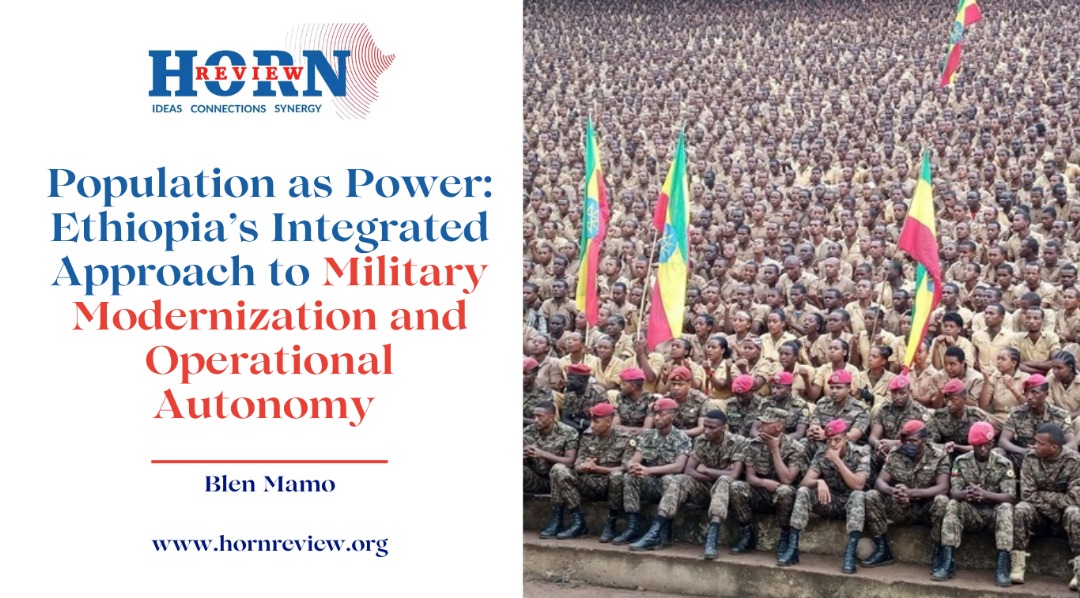
19
Oct
Population as Power: Ethiopia’s Integrated Approach to Military Modernization and Operational Autonony
Ethiopia’s National Defense Force recently inaugurated its 44th commando training cohort, an event that might seem routine but is, in reality, emblematic of a deliberate national strategy: harnessing the country’s demographic strength, industrial ambition, and institutional capacity to achieve operational and strategic autonomy.
This approach integrates human-capital development with domestic defense industrialization, reinforcing a vision in which Ethiopia’s population is both a latent and actively mobilized strategic asset. By combining these elements, the nation strengthens hard power – through well-trained troops and technical labor – while projecting soft power through its diaspora, civic engagement campaigns, and international signaling, all of which underscore Ethiopia’s sovereignty and agency.
The emphasis placed by ENDF leadership on discipline, resilience, and service to the nation underscores a broader understanding of modern military capability. Today, effectiveness is measured not merely by numbers of soldiers but by the ability of personnel to operate, maintain, and integrate sophisticated intelligence, surveillance, and reconnaissance systems with precision strike capabilities.
Institutionalized training ensures that Ethiopian commandos can maximize the utility of domestically produced platforms, multiplying operational effectiveness while embedding professionalism at every level. In this sense, the 44th cohort does more than expand troop numbers – it strengthens Ethiopia’s capacity to employ drones, armored vehicles, and other indigenous systems effectively, while reinforcing public legitimacy for defense and industrial initiatives.
This focus on personnel naturally complements Ethiopia’s parallel efforts in domestic defense production. Since early 2025, the country has accelerated unmanned aerial vehicle programs through SkyWin (also referred to as Sky Wing) Aeronautics, a facility designed to produce drones at scale for military and civilian applications alike. Alongside SkyWin, the Homicho Ammunition Engineering Complex represents a critical pillar of Ethiopia’s indigenous defense-industrial base. Located near Ambo, Homicho produces a wide range of munitions, from small-arms rounds to mortars and artillery shells, ensuring that the Ethiopian armed forces have reliable domestic access to essential ammunition.
In March 2025, the Prime Minister inaugurated an expanded facility, highlighting its capacity to meet both domestic needs and export commitments, reportedly securing contracts worth over USD $30 million. Together, SkyWin and Homicho illustrate Ethiopia’s dual-track strategy: advancing high-tech capabilities while maintaining foundational military production.
By internalizing both advanced systems and munitions, Ethiopia reduces dependence on foreign suppliers, shortens maintenance and supply cycles, and strengthens operational readiness. These initiatives also send a clear message to regional actors that Ethiopia possesses the technical, industrial, and operational capacity to sustain a modern, self-reliant military – a clear demonstration of sovereign agency.
Ethiopia’s current industrial trajectory builds on lessons learned from earlier large-scale initiatives, particularly the Military Engineering and Technical Corporation (METEC). While METEC aimed to establish a domestic supply chain for heavy industry and defense production, challenges in governance and management limited its full potential. Today, Ethiopia approaches industrialization with a more disciplined strategy. Current projects, from UAV manufacturing to armored vehicle assembly and munitions workshops, are designed to embed transparency, quality assurance, and institutional accountability, ensuring that industrial ambitions translate into durable operational capability.
Demography plays a central role in this strategy. With an estimated population of 130 million, Ethiopia possesses a substantial pool of potential military recruits, industrial labor, and diaspora actors. The state actively harnesses this demographic advantage across both hard and soft power domains. On the hard power side, repeated commando intakes institutionalize the transformation of population into operational military capacity. The same human capital sustains industrial production, staffing drone, munitions, and vehicle manufacturing while maintaining logistics and repair networks. In this way, Ethiopia converts its population into a force multiplier for strategic autonomy, ensuring that operational capacity is grounded in a robust and sustainable foundation.
Soft power complements this approach. Ethiopia’s diaspora contributes not only remittances but also technical expertise and international advocacy, enhancing both material resources and diplomatic leverage. Domestically, mass civic campaigns, such as the Green Legacy tree-planting initiative and high-profile infrastructure projects, mobilize millions, projecting a vision of national cohesion and productivity. Thus, framing domestically produced defense equipment as a national achievement reinforces Ethiopia’s sovereign narrative, connecting industrial capacity, human capital, and national pride in a coherent strategy for influence and legitimacy.
The integration of human capital and industrial capability yields multiple strategic dividends. Domestic production and sustainment reduce vulnerability to external actors, strengthening deterrence. Large, trained cohorts, aligned with industrial capability, create feedback loops that accelerate tactical learning, platform refinement, and doctrinal evolution. These gains, however, are not without regional implications. Neighbors may respond to Ethiopia’s growing capabilities, potentially accelerating security competition in the Horn of Africa. Expanding domestic production also raises questions regarding exports, proliferation, and accountability, which Ethiopia is managing prudently as part of a responsible strategic-autonomy agenda.
Sustainability and governance remain critical. The government understands producing advanced systems is insufficient without reliable maintenance pipelines, spare-part logistics, and rigorous technical certification. However, Ethiopia’s METEC experience highlights the necessity of transparent procurement and independent oversight. At the same time, the broader availability of ISR and precision strike capabilities underscores the need for codified rules of engagement, civilian oversight mechanisms, and independent investigatory channels to prevent misuse and mitigate escalation risks.
For policymakers, several practical imperatives are clear. Training must be closely integrated with industrial and logistics pipelines to ensure operational continuity. Transparent procurement, rigorous quality assurance, and institutional safeguards are essential to prevent systemic failure. Export controls and end-use monitoring are necessary to mitigate proliferation risks, while operational doctrines should incorporate accountability, particularly regarding remotely operated systems. Finally, maximizing dual-use civilian applications of defense technologies provides tangible societal benefits while reinforcing domestic legitimacy and public support.
Viewed holistically, the 44th commando intake exemplifies Ethiopia’s strategic vision. It is not merely an exercise in expanding troop numbers but a deliberate effort to weave together human capital, industrial capacity, and operational doctrine into a self-sustaining national capability. From SkyWin’s drone production lines to Homicho’s munitions facilities, repeated mass mobilization initiatives, and high-visibility infrastructure projects, Ethiopia is systematically translating demographic scale into operational, industrial, and diplomatic leverage.
While these developments enhance the country’s strategic autonomy and regional influence, realizing their full potential requires sustained governance, disciplined industrial management, and ethical oversight. The “population-is-power” narrative is far more than symbolic; when combined with institutional rigor, it underpins enduring national strength and the capacity for independent strategic action, reflecting Ethiopia’s determination to chart its own path in a complex regional and global security environment.
By Blen Mamo, Executive Director, Horn Review


